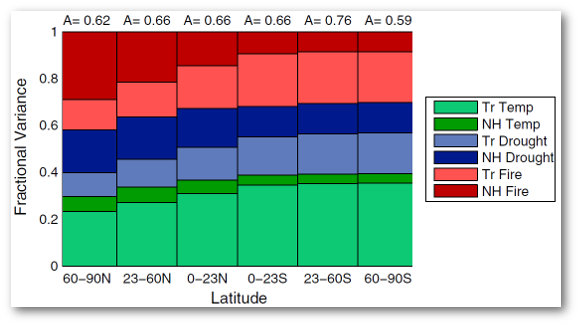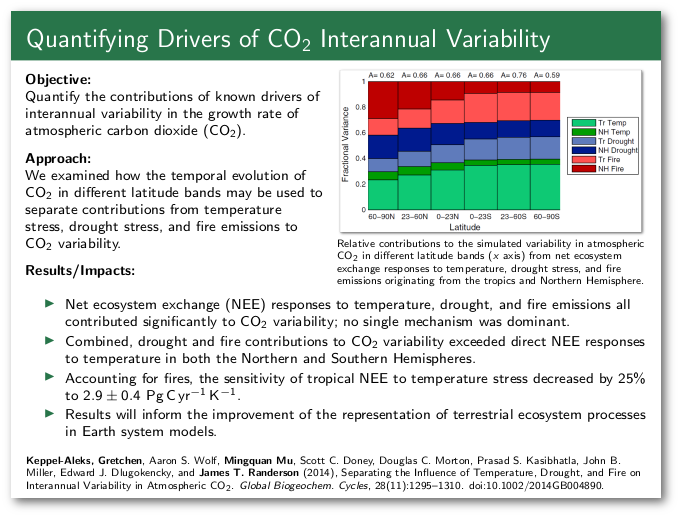Research Highlights
Quantifying Drivers of CO2 Interannual Variability
November 1, 2014
Objective
Quantify the contributions of known drivers of interannual variability in the growth rate of atmospheric carbon dioxide (CO2).
Approach
We examined how the temporal evolution of CO2 in different latitude bands may be used to separate contributions from temperature stress, drought stress, and fire emissions to CO2 variability.
|
Results/Impacts
- Net ecosystem exchange (NEE) responses to temperature, drought, and fire emissions all contributed significantly to CO2 variability; no single mechanism was dominant.
- Combined, drought and fire contributions to CO2 variability exceeded direct NEE responses to temperature in both the Northern and Southern Hemispheres.
- Accounting for fires, the sensitivity of tropical NEE to temperature stress decreased by 25% to 2.9 ± 0.4 Pg C yr-1 K-1.
- Results will inform the improvement of the representation of terrestrial ecosystem processes in Earth system models.
Keppel-Aleks, Gretchen, Aaron S. Wolf, Mingquan Mu, Scott C. Doney, Douglas C. Morton, Prasad S. Kasibhatla, John B. Miller, Edward J. Dlugokencky, and James T. Randerson. November 1, 2014. “Separating the Influence of Temperature, Drought, and Fire on Interannual Variability in Atmospheric CO2.” Global Biogeochem. Cycles, 28(11):1295–1310. doi:10.1002/2014GB004890.

